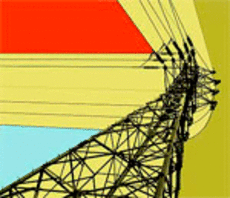Peter Fox-Penner, a former chairman of The Brattle Group, reports some surprising developments—one of them quite disconcerting—in the latest issue of IEEE's smart grid eNewsletter.
On the positive side of the ledger, Fox-Penner finds that contrary to what one might suppose, relatively small municipal and cooperative utilities have been among the most aggressive and imaginative early adopters of smart grid technology. Cooperatives currently lead smart meter deployment, with 25 percent penetration of their customers' homes—three times the average across all utilities—according to the Federal Energy Regulatory Commission
On the negative side, use of dynamic pricing across the United States is currently flat or declining rather than growing, contrary to what just about every smart grid advocate has expected or predicted. Despite an 85 percent increase in advanced metering over the past two years, the number of entities offering sophisticated pricing programs has decreased.
The numbers are dramatic: "There are 72 fewer entities offering Time of Use (TOU) Rates programs today than there were in 2008—which translates into 180,000 fewer consumers being offered TOU plans," writes Fox-Penner. "The decrease in entities offering Real Time Pricing (RTP) is even more dramatic: In 2008, 85 entities offered RTP programs and within only two years this number has shrunk to 19."
Fox-Penner concludes (uncontroversially) that evolution of the smart grid will be gradual and halting. Yet, considering the hesitant state of the whole economy, the smart gird continues to produce relatively dramatic news on a regular basis. On August 8, the New York Independent System Operator announced a $74 million smart grid initiative, with $37 million in support from the U.S. Department of Energy. That announcement coincided with the ribbon-cutting at the NYISO's new central control facility in Rensselaer, N.Y., itself a $35.5 million project.
The smart grid initiative involves installation of capacitor banks and phasor measurement units (PMUs) throughout the New York State system, which NYISO estimates will save the state $9 million per year in reduced power losses and higher reliability. "Eventually, the NYISO’s PMU network will connect with PMU networks in New England, the mid-Atlantic, the Midwest, and Ontario, Canada, to create a broader situational awareness throughout the Eastern Interconnection Planning Collaborative, a coalition of 24 transmission planning authorities in the eastern United States and Canada," says the ISO's press release.
Another seemingly positive development: The consultancy Black & Veatch reports that ComEd customers could save $2.8 billion in electricity bills over the next 20 years thanks to smarter metering, EnergyCentral reports. Well, that’s very nice, but how exciting is it actually? ComEd appears to have 3.8 million Northern Illinois customers. It takes only a little arithmetic to discover that their $2.8 billion saving translates into $36.85 per year for 20 years.
And as long as we're dwelling on details, why aren't customers already equipped with smart meters seeing savings? If they don't pretty soon, we're going to start hearing mean talk about he Stupid Grid.



